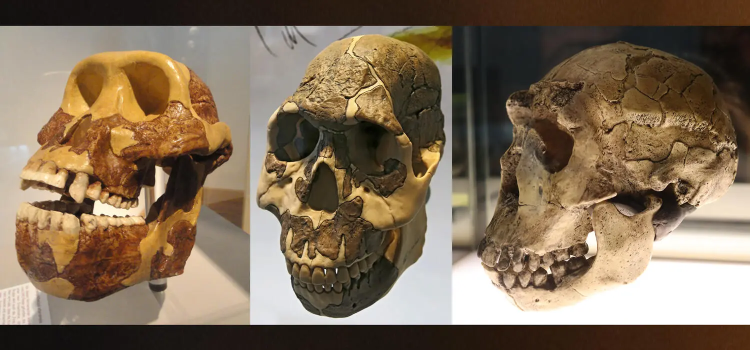Early humans adopted a more carbohydrate-rich diet before their teeth were ideally suited to eat those foods, according to a new study co-authored by a University of Calgary anthropologist.
Vivek V. Venkataraman, an assistant professor in the Department of Anthropology and Archaeology in the Faculty of Arts, was part of the team that has provided the first evidence for behavioural drive in the human fossil record.

A comparison of teeth from three hominins. Photo Credit: Dartmouth College
Typically, the feeding behaviour of animals is reflected in the morphology (physical characteristics) of their teeth. Venkataraman and team documented a difference between the eating behaviour of early hominins and the morphology of their teeth.
"The implication is that the behaviour comes first," explains Venkataraman. "There was a shift in the feeding behaviour of our deep ancestors, but it wasn't immediately reflected in the shape of their teeth."
While behavioural drive has been documented in other animals, this is the first time it has been noted in the line that Homo sapiens descend from. The study, Behavior drives morphological change during human evolution, has been published in the journal Science.
Venkataraman collaborated with researchers from his alma mater, Dartmouth College in New Hampshire. The study was led by Luke Fannin, a graduate student in the group of anthropology professor Nathaniel J. Dominy.
Hominins made the shift from eating primarily fruits, flowers, and insects to more starchy grasses, sedges and underground storage organs such as tubers. It would take 700,000 years for evolution to catch up in the form of long molars that allowed them to chew tough plant fibers efficiently.
"It shows starchy foods drove human evolution from the early days, and now you look at the world around us and grasses still play a major part in our lives," says Venkataraman. "We live on corn, wheat, rice, and so on, but that didn't come about just due to agriculture, grasses play a bigger role in our evolution going back millions of years."
Different techniques used to identify shift
The team used two different techniques to identify this shift. The first was straightforward: looking at the shape and size of the teeth in different animals.
The second technique was more innovative: they isolated isotopes of carbon and oxygen in the fossils. Every food item has a certain chemical composition that it leaves a trace in the teeth, so by shaving off a piece of a tooth and analyzing it, the researchers were able to determine the diet of the fossilized animal.
"There were changes in what they were eating as shown through the tooth isotopes before there was the morphological shift through the size and shape of the tooth," says Venkataraman.
The team had a unique dataset to determine the difference between behaviour and morphology, and now future research will have to investigate the contexts in which behavioural drive occurs and what evolutionary and ecological impacts it has.
Venkataraman says they need to test behavioural drive in different systems and different animals to see if this phenomenon happens more broadly.
"It shows that animals aren't perfectly adapted to their environments morphologically, but still found ways to survive," Venkataraman says.
"It shows that our ancestors were quite ecologically flexible."












